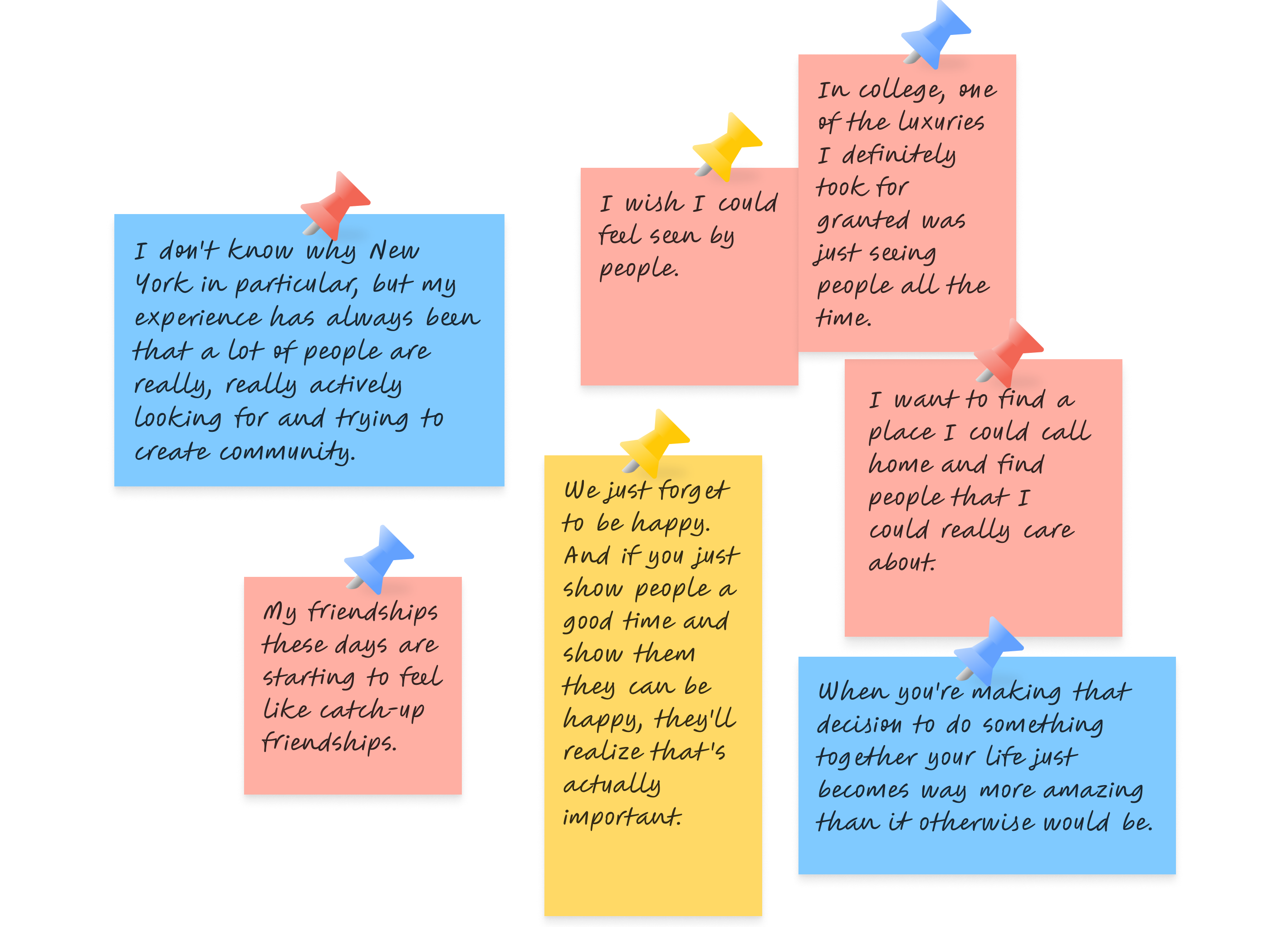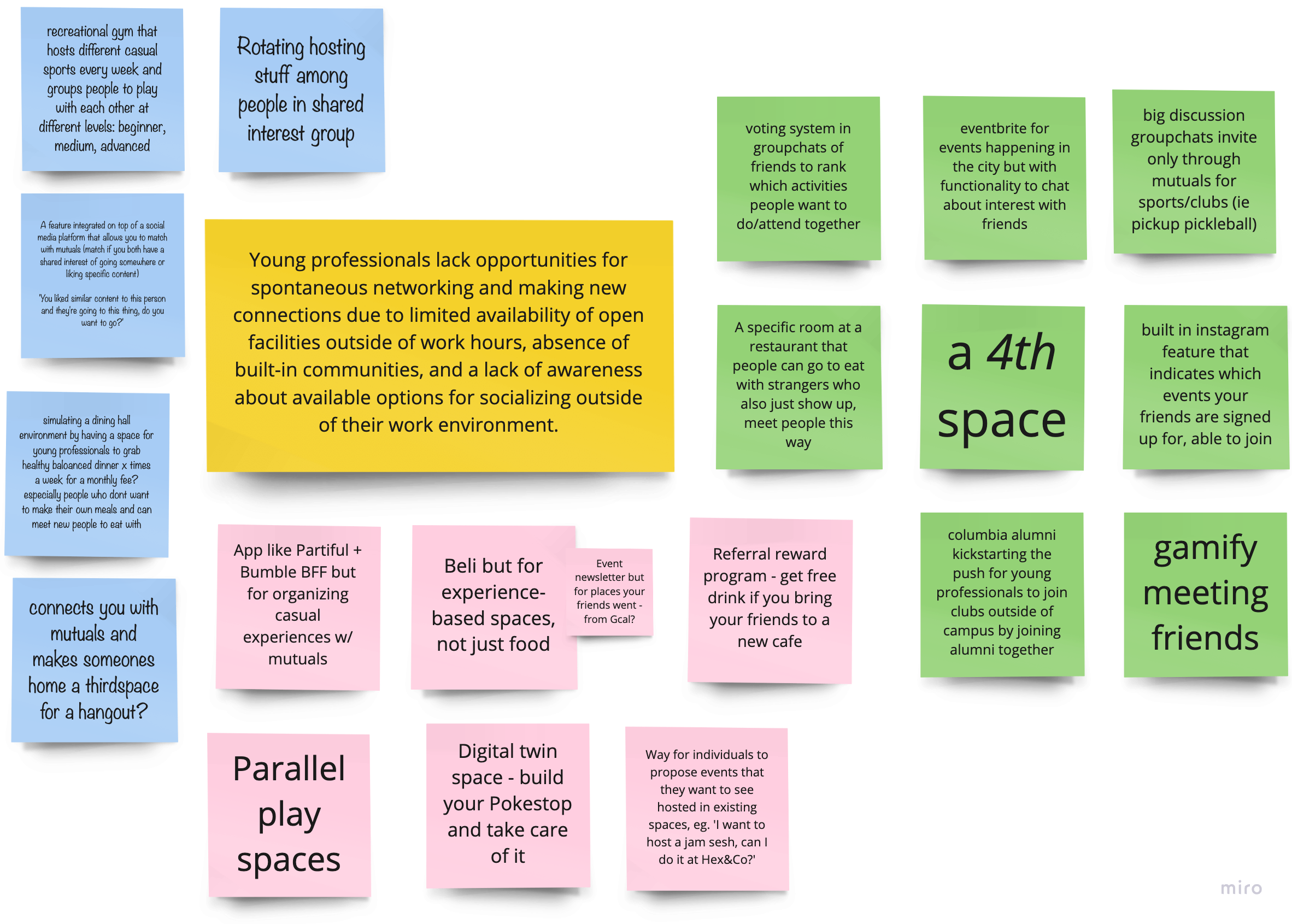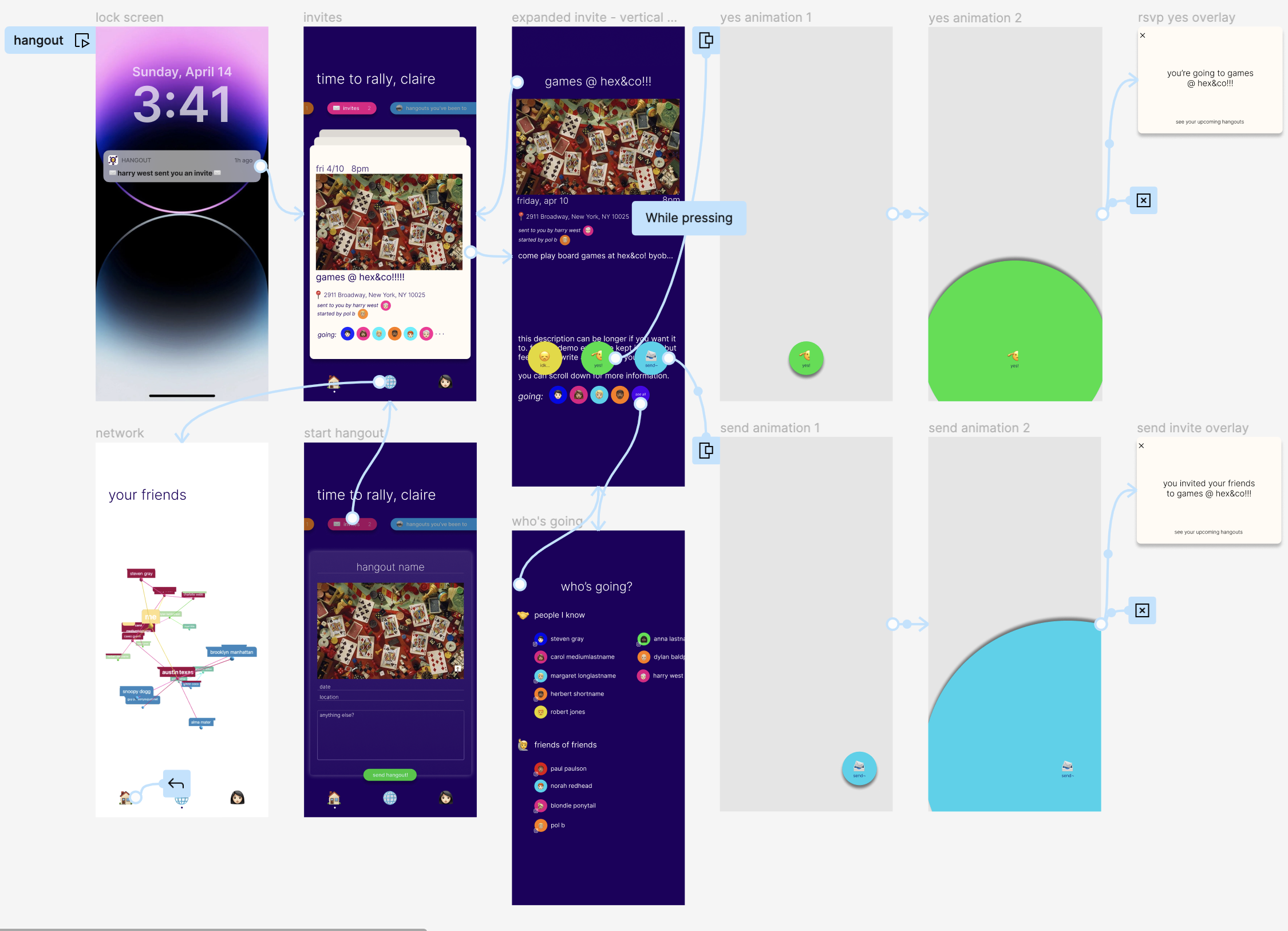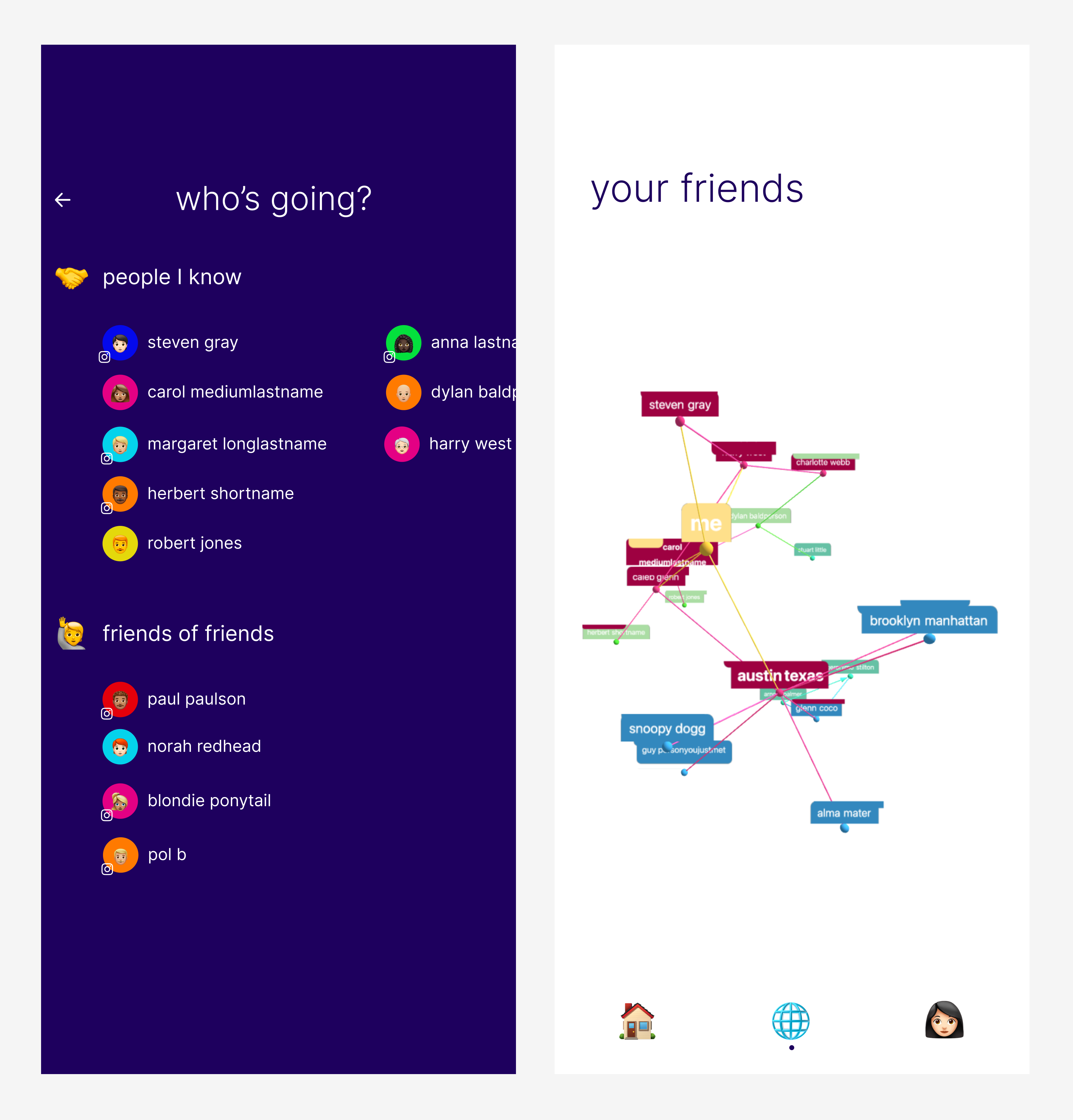Prompt: Design something that increases repurposing/reusing in New York City
Why community building? Every New Yorker we interviewed indicated a need for more social connectivity
We conducted six exploratory interviews with young adult New Yorkers and got open to any insights they might share, but were surprised when they all indicated a common unmet need before we even mentioned our specific focus on repurposing/reusing.

Repurposing/reusing doesn't always have to refer to physical objects, so we decided to follow our users and keep digging, even if it wasn't the direction we expected. To further explore the problem space and understand why New Yorkers' social connectivity needs weren't currently being met, we returned to our initial interviewees and conducted ethnographic interviews about how they socialized.
Before we became more comfortable with each other as a team, AI acted as a social lubricant by providing a common ground
While we pursued this design project, we also explored how using AI as a generative teammate affected our team's interpersonal dynamics and ideation. We used ChatGPT to aggregate insights from the ethnographic interview transcripts and prompted it to propose several problem statements using those insights. We found that AI was especially helpful when we were first getting to know each other as a team: its outputs acted as a common ground for us to iterate from.

After several rounds of ideating solutions, reevaluating the problem space, and returning to users, we refined the problem statement as follows:
Young adults in NYC lack opportunities for spontaneous networking and making new connections due to limited availability of open facilities outside of work hours, absence of built-in communities, and a lack of awareness about available options for socializing outside of their work environment.
AI's training limitations meant it didn't contribute any new or interesting ideas during brainstorming
Even though we went through several rounds of prompting ChatGPT, it only proposed solutions we'd already seen in our background research, which makes sense: AI can only ever be as original or creative as its training data. If a problem still exists, it's probably because there aren't enough creative solutions out there. So ChatGPT won't be trained on those sorts of innovative ideas, and it won't generate those sorts of innovative ideas. But how can we train an AI to be more creative than we are ourselves? One approach, which we're already seeing, is to train AI on data generated by other AI, but this kind of model would be very likely to amplify bias/noise in the original data.
Ultimately, human-led brainstorming was more interesting and thought-provoking
We tried to do Crazy 8's, but it ended being more like Crazy 6's... Time pressure forced us to be more creative and outside-the-box, which doesn't happen with AI.

Our users felt most compelled by an idea called Hangouts that leverages friends of friends
NYC is the densest American city, yet over half of New Yorkers report regularly feeling lonely. Hangout maximizes your opportunities for chance new connections by leveraging your friends of friends. When someone in your Hangout network opens a Hangout at a public space like a cafe or park, everyone in their network gets an invite, including you. You can accept and send the invite to your own network. Now you can go to Hangouts with a mix of old friends and new faces, simplifying your journey to make lasting connections in the busy city of New York.

By turning the verb 'hang out' into a noun, we make Hangouts the object rather than the other person. When you onboard to Hangout, you add any existing friends you'd like to go to Hangouts with.

You can get Hangout invites directly from the opener, or through a mutual connection. Here, Pol B started a Hangout and sent it to Harry West, who sent it to Claire.
Play around with the interaction here - just press and hold on 'yes' or 'send'.
Once you've attended the same Hangout as someone, they get added to your Hangouts network. Each edge is color-coded by the Hangout you met at, creating a colorful 3D network that grows as you meet more people. The more connections someone helps you make, the bigger their node gets.

Our friendships and relationships with other people are what make us human. Hangouts helps you make meaningful connections and find community.
Explore the prototype more here.